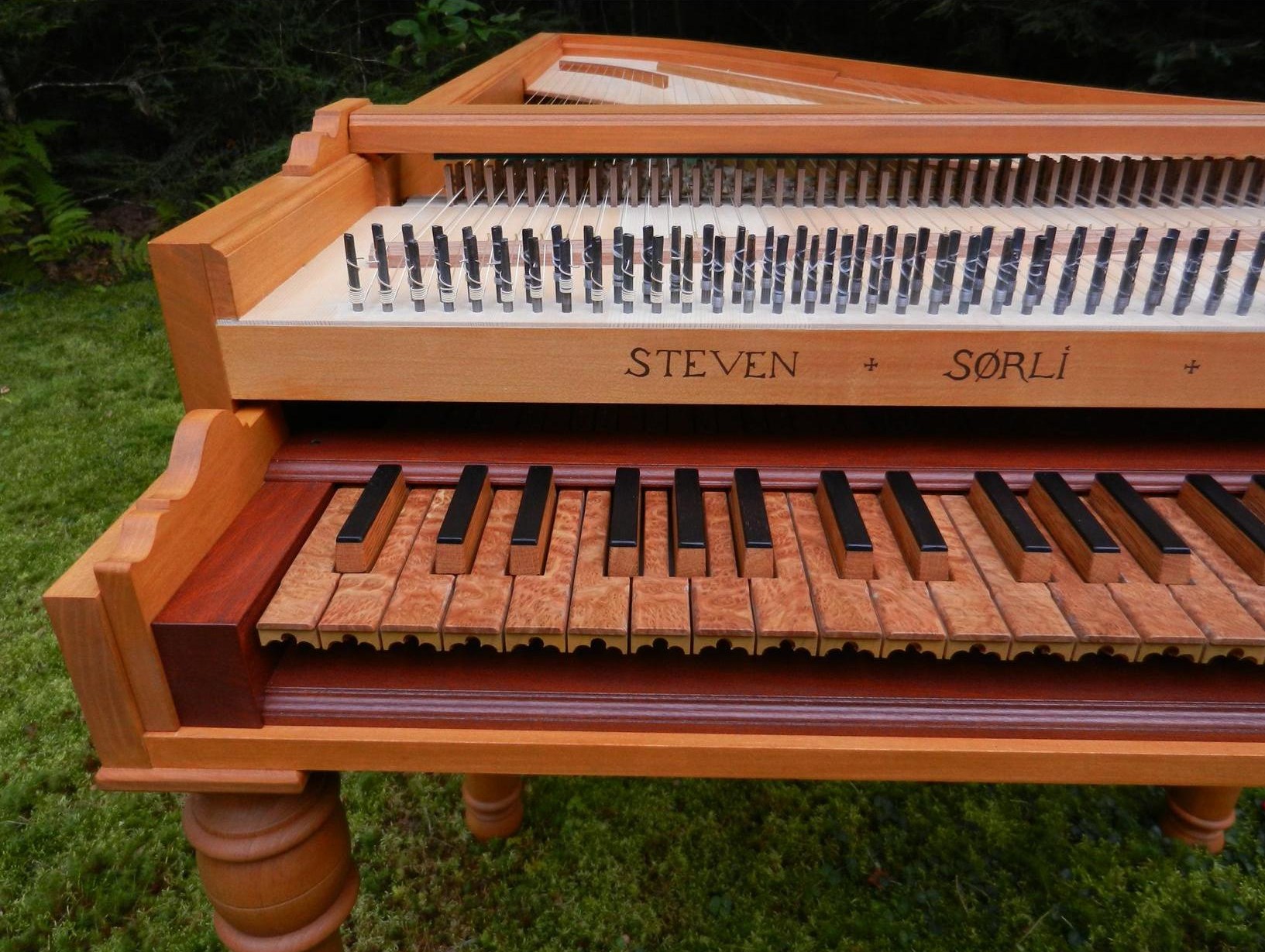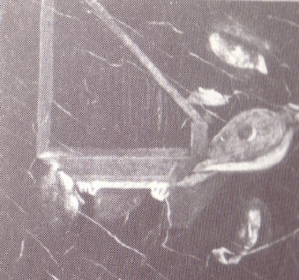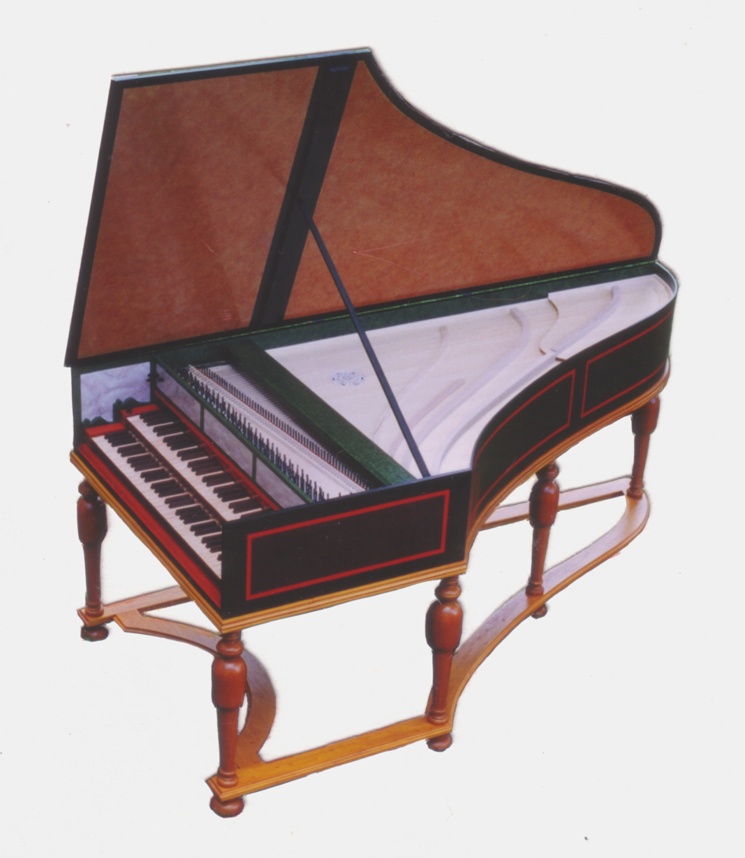

Reviving The Lautenwerck
One of Bach's favorite keyboard instruments was the lute-harpsichord or lautenwerck. The 18th century scholar Jacob Adlung described it as "the most beautiful of all keyboard instruments after the organ...because it imitates the lute, not only in tone quality, but also in compass and delicacy." No original gut-stringed harpsichords have survived, yet the lautenwerck is mentioned as early as 1511 and is found in many writings of the 17th and 18th centuries. Only a few lautenwerck makers have left traces of their existence. Detailed descriptions come from three German harpsichord makers: Johann Nicolaus Bach (second cousin of J. S. Bach), Johann C. Fleischer and Zacharias Hildebrandt.
The designs described show a variety of invention, ranging from a small three octave instrument fitted with and oval resonator in the shape of a lute attached below the soundboard, to large two and three manual versions in the standard harpsichord shape with 8' unisons, 4' and 16' stringing and choirs strung in brass.
There are two paintings which depict the upright lautenwerk or clavicytherium. One is the 1640 Andrea Sacchi shown in my homepage and the other is in the corner of the "Virgin and Child" by Geertgen tot Sint Jans c. 1489. This is possibly a claviorganum with hand bellows.

Lute-harpsichords do sound much like a lute with a very pure fundamental tone and short sustain. Leather plectra produce a lovely soft tone from the gut, imitating a person's finger pad plucking the string. For a brighter sound, quill or delrin plectra with a textured upper surface can be used. These pluck the string with a natural feel and produce a textured, satisfying tone. The scaling of the bass notes is rather short compared to metal-strung harpsichords, allowing lautenwercke to be compact in size. The action responds much like a metal-strung harpsichord and allows for an easy interpretation of most keyboard and lute repertoire. Lautenwercken excel as continuo instruments, blending splendidly in any small ensemble.
The scant descriptions in the 17th and 18th century writings often refer to lautenwercke that could deceive professional lutenists. In addition, the keyboard instrument offers unlimited design possibilities. The greater size allows an extended range, more space for multiple choirs and greater volume. This type of lautenwerck can rival any metal-strung harpsichord as a concert hall instrument.
In many ways the lute-harpsichord is more desirable than the metal-strung harpsichord. There are many keyboardists who are not at all fond of the complex bright sound of the harpsichord. They do, however, adore the soft timbre of the lautenwerck. Although real gut strings are available, they can be very unstable in holding pitch. The synthetic alternatives are incredibly stable, much more so than metal strings. The bass notes are strung with copper-wound nylon and sound identical to the wound silk or gut available beginning in the late 17th century. The volume of a lute-harpsichord is about 20% less than that of a harpsichord with metal strings. It can be about the same volume when the gut string has two jacks plucking it at the same time, a feature now available on some models. Steven Sorli has succeeded in reviving the art of lautenwerck making to an eminent level. The incredible tuning stability and ingenious practical innovations will inevitably ensure a permanent place for this long neglected instrument.
ssorli@gmail.com

